23yo homeowners’ rude shock at supermarket reality
A young couple were left shocked after doing their first ever “proper” supermarket shop and realising how expensive it was.
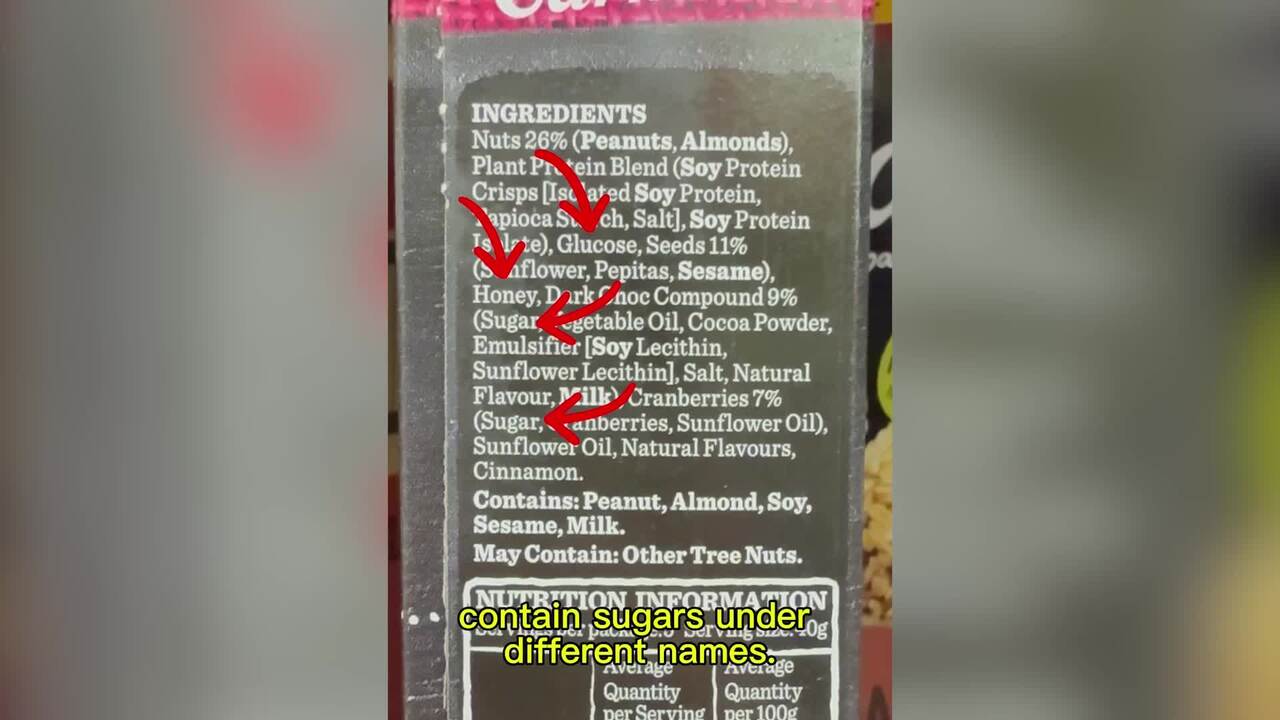
Eat
Don't miss out on the headlines from Eat. Followed categories will be added to My News.
As supermarket prices continue to climb, people are turning to social media to share their experiences with their weekly grocery shopping.
Gold Coast local Maddison Smillie, 23, was one such Aussie, taking to TikTok to express her shock of her first proper grocery shop after moving out of her family home and into a property she bought with her partner.
“What is the usual amount to spend on groceries each week?” she asked her followers in the clip as she shopped at Coles.
“My partner and I are 23 years old, and we just bought our first home … we’ve been so lucky to have lived with my parents this whole time; we’ve never had to do a proper grocery shop. I know how expensive food is, but I still felt shocked when I saw the price of cheese.”

Some of the pantry items she bought included condiments, spices, canned tomatoes and olive oil, as well as snacks like chips and crackers.
She and her partner also picked up some Scotch Fillet steaks, mince, chicken breasts, a rotisserie chicken, two litres of milk, Chobani yoghurt cups, fresh vegetables, bread rolls, soft drinks and cat food.
The total came to $214.51.

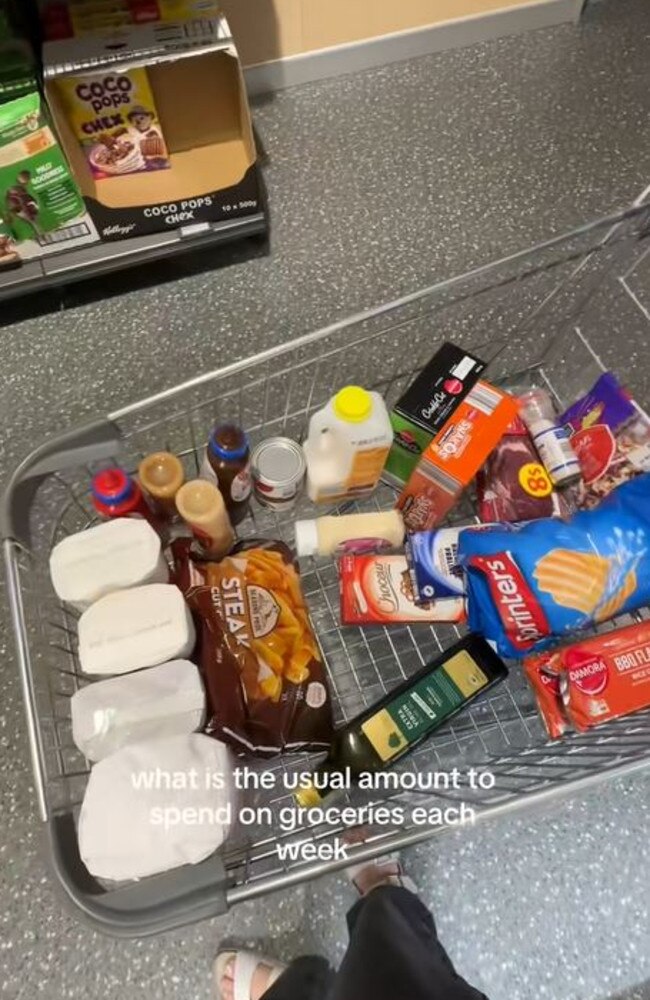
Ms Smillie’s video sparked a flood of comments from people eager to share their own weekly grocery tallies and their best tips for saving money.
“My partner and I spend about $250 a week. Our biggest cost-saving hack is frozen veg and always having something in the freezer that can be cooked quickly,” one user wrote.
Another admitted, “Me and my partner spend about $280-$320 a week”.
Some claimed they kept their costs down to $150 by shopping at local food markets, butchers, and Aldi, while others swore by click-and-collect, claiming it helped them avoid impulse buys.
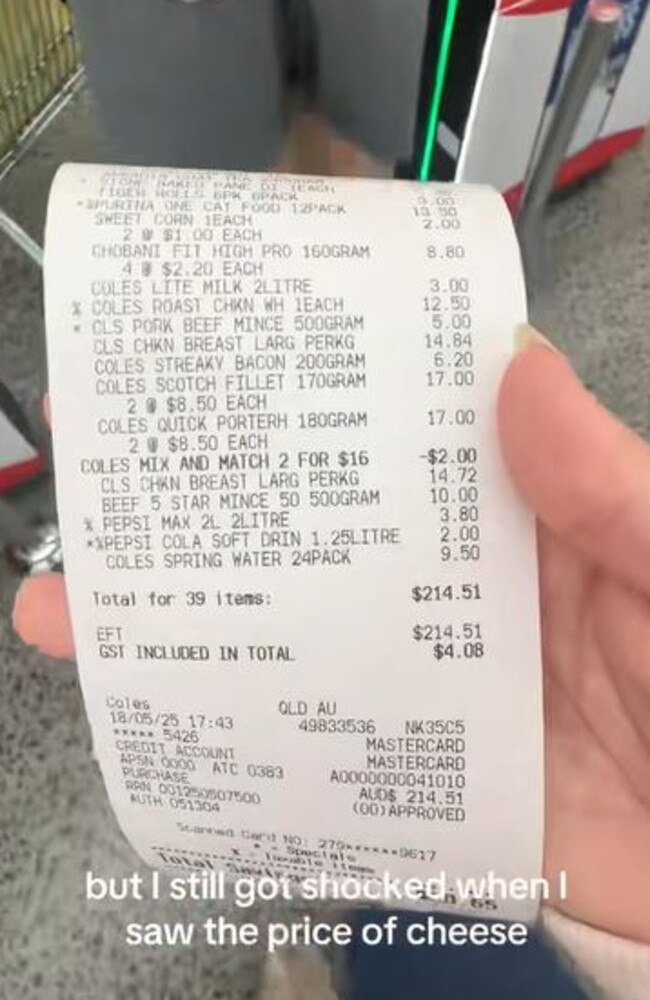
Many also stressed that the first shop after moving out is often a rude awakening, but it’s not always going to be so steep.
“Your first few shops will be expensive! But once you have the basics, between the two of us, we do $120 a week. We minimise processed food and shop specials on meats,” one shopper advised.
Meanwhile, many were just curious about how she afforded to buy a home at such a young age.
Ms Smillie, who has been with her boyfriend for nine years, replied: “We started working and pretty much saving our money from 17 years old!
“We’ve always been really good savers, we never splurged on anything other then nice holidays.”
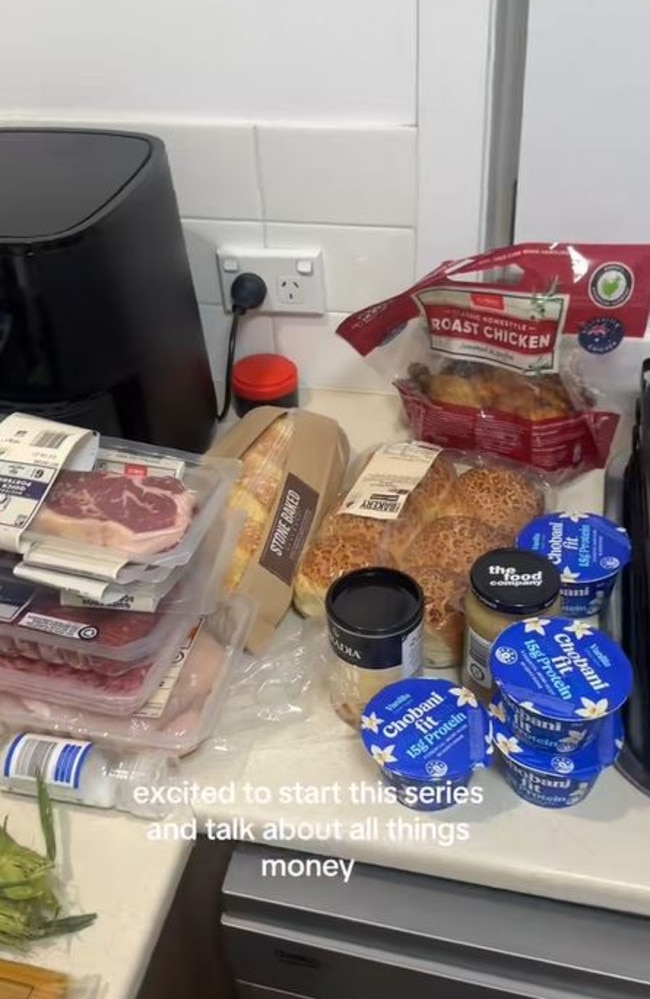
So, what’s normal when it comes to the weekly shop?
According to research from Finder, a staggering 80 per cent of Aussies are actively trying to cut their grocery bills this year.
The research found that 45 per cent are cutting back on non-essential items, while 43 per cent are reducing their overall spending.
It’s little wonder, as grocery spending hit a record high in January, with the average household now forking out $209 a week, up 11 per cent from $188 just a year ago.
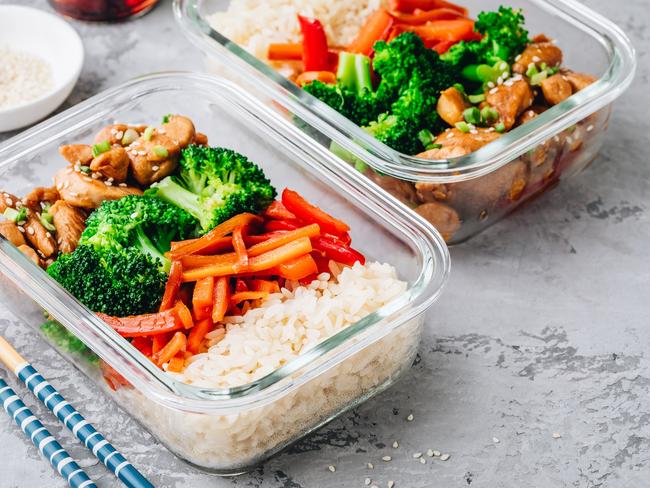
But there’s hope for those looking to reclaim some cash.
Nutritionist and MyFitnessPal ambassador Michaela Sparrow told news.com.au that meal planning can make a serious difference.
“The people who save the most money and eat the most consistently healthy meals are the ones who plan ahead,” she said.
“You waste less food, shop with more purpose, and don’t end up with five lots of the same ingredient ‘just in case’.”
Recent data backs this up, showing that parents who plan their children’s school lunches save over $50 a week – which is more than $2,500 a year just by avoiding canteen purchases.
“And that’s only school lunches,” Ms Sparrow notes. “Imagine how much more you could save by applying that same mindset to your weekly shop overall”.

Tips to save money and start meal planning
When it comes to meal planning, Ms Sparrow advises people to start small, and make it “doable”.
Here are her tips:
Step 1: Look at your week.
This gives you a realistic starting point to then think about your grocery list and what meals you will be cooking throughout the week or planning in advance.
Step 2: Plan just three to five dinners.
You don’t need to plan all 21 meals of the week. Dinners are usually the biggest source of takeaway temptation, so focus there first.
Tip: You can always cook an extra portion, so you’ve got leftovers for the following day.
Step 3: Write your shopping list based on the meals you’ve planned.
Go through each recipe or meal idea and jot down what you actually need. Check your pantry and fridge first.
Step 4: Do a little prep, if you can.
Just roasting a tray of veggies or cooking a couple of proteins can go a long way, or perhaps making a batch of sauce or a grain like quinoa. It can make weeknight meals so much easier.
Step 5: Take advantage of the technology we have access to.
For those who struggle with the mental load of it all, tools like the new MyFitnessPal Meal Planner are a game changer. It creates a full weekly plan and grocery list based on your dietary needs and your family’s tastes, your cooking skill level, and how much time you actually want to spend in the kitchen.
Originally published as 23yo homeowners’ rude shock at supermarket reality





